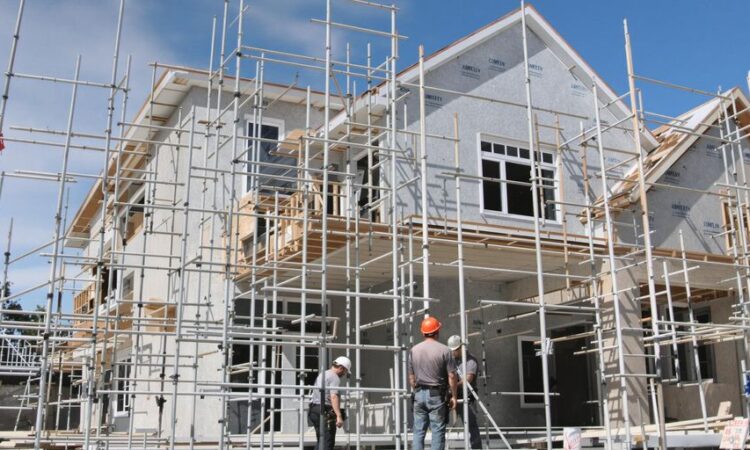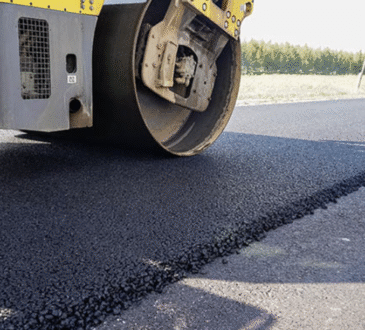
Health Hazards Associated with Asbestos
Asbestos is a naturally occurring mineral that was widely used in construction due to its durability and resistance to heat. However, exposure to asbestos fibers poses serious health risks. When inhaled, these tiny fibers can lodge in the lungs and lead to diseases like asbestosis, mesothelioma, and lung cancer.
The health effects may not appear immediately and can take decades to develop, which makes early detection challenging. Workers in construction and renovation are particularly vulnerable, especially when handling older materials without proper precautions.
Common Uses of Asbestos in Construction
Historically, asbestos was prized for its versatility. It was commonly found in:
- Insulation materials, such as pipe and boiler insulation.
- Roofing shingles and siding.
- Floor tiles and adhesives.
- Cement products used in walls and ceilings.
Understanding where asbestos might be present is crucial for anyone involved in construction or remodeling. Even though its use has declined, older homes and buildings often still contain asbestos.
Why Asbestos Is a Concern in New Homes
While asbestos is less common in modern construction, it’s not entirely absent. Imported materials or improper handling of older materials during demolition can introduce asbestos into new home projects. Builders must remain vigilant to avoid contamination.
For homeowners, the presence of asbestos in new construction poses long-term health concerns. Proper testing and adherence to asbestos safety guidelines are critical to ensure a safe living environment. By understanding the risks and regulations, both builders and homeowners can take steps to minimize exposure.
Federal Guidelines on Asbestos in Construction
Overview of EPA Regulations
The Environmental Protection Agency (EPA) plays a central role in regulating asbestos to protect public health. Their guidelines address everything from identifying asbestos-containing materials to proper disposal methods. One of the EPA’s primary goals is to minimize exposure risks by enforcing strict rules on handling and abatement. For more detailed information on exposure risks and health effects, visit the EPA asbestos site. Key aspects of their regulations include:
- Prohibiting the use of certain asbestos-containing products.
- Requiring notification before demolition or renovation projects.
- Mandating air quality standards during asbestos removal.
Role of OSHA in Asbestos Management
The Occupational Safety and Health Administration (OSHA) focuses on protecting workers who may encounter asbestos on the job. Their regulations are outlined in documents like 29 CFR § 1910.1001 for general industry and 29 CFR § 1926.1101 for construction. These rules emphasize:
- Providing workers with personal protective equipment (PPE).
- Conducting regular air monitoring in workplaces.
- Offering training programs to ensure safe handling practices.
For more details on these requirements, consult the asbestos management requirements.
Key Federal Laws Impacting New Home Construction
Several federal laws have been enacted to address asbestos risks in construction, including:
- The Clean Air Act (CAA): Regulates emissions of hazardous air pollutants, including asbestos fibers.
- The Toxic Substances Control Act (TSCA): Governs the production and use of asbestos-containing materials.
- The Asbestos Hazard Emergency Response Act (AHERA): Focuses on asbestos management in schools but sets a framework applicable to other buildings.
These laws collectively ensure that builders prioritize safety when working with or around asbestos-containing materials. By adhering to these guidelines, construction companies can reduce health risks and avoid significant legal penalties.
State-Level Asbestos Regulations
Variations in State Requirements
State-level asbestos regulations can differ significantly, creating a patchwork of rules that builders and contractors must navigate. While federal guidelines provide a baseline, states often enforce stricter standards tailored to local concerns. For instance, some states require mandatory asbestos inspections for all renovation projects, while others only impose this for larger-scale constructions. Understanding these variations is crucial for compliance and safety.
How State Laws Complement Federal Guidelines
State laws are designed to work alongside federal regulations, like the EPA’s restrictions on asbestos use. These laws often fill gaps left by federal policies, addressing specific issues such as licensing for abatement professionals or disposal methods. For example, in April 2019, the EPA restricted discontinued asbestos uses to protect public health. Some states expanded on this by banning additional materials or introducing tougher penalties for violations. This layered approach ensures a more comprehensive safety net for workers and residents.
Examples of Strict State Regulations
Certain states have taken a more aggressive stance on asbestos management. California, for instance, mandates stringent reporting requirements and imposes hefty fines for non-compliance. Similarly, New York requires detailed asbestos management plans for all construction projects, regardless of size. These measures not only protect public health but also set a high standard for other states to follow. For anyone working in construction, it’s important to understand how asbestos laws differ across states to avoid legal and financial risks.
Identifying Asbestos in Building Materials
Common Materials Containing Asbestos
Asbestos was widely used in construction materials for decades, and its presence is still a concern in many buildings today. Some of the most common materials that might contain asbestos include:
- Insulation, especially around pipes and boilers.
- Vinyl floor tiles and the adhesives used to install them.
- Roofing materials, including shingles and sealants.
It’s worth noting that asbestos is often hidden within these materials, making visual identification nearly impossible. Professional testing is the only reliable way to confirm its presence.
Testing Methods for Asbestos Detection
When it comes to asbestos testing, there are a few methods commonly used to detect its presence:
- Bulk Sampling: A small piece of the suspected material is collected and sent to a lab for analysis.
- Air Sampling: This method measures asbestos fibers in the air, which can indicate contamination.
- Surface Sampling: Used to detect asbestos dust on surfaces, often after renovation work.
Each method has its specific use case, and choosing the right one often depends on the situation. Professional expertise is essential to ensure accurate results.
When to Consult a Professional
If you suspect asbestos in your home, it’s best to bring in a certified professional. Here’s when you should consider consulting one:
- Before starting any renovation or demolition work.
- If you notice damaged materials that could contain asbestos, such as crumbling insulation.
- When buying or selling a home built before the 1980s.
Professionals are trained to handle asbestos safely and can guide you through the next steps, whether that involves testing, removal, or ongoing monitoring. Ignoring the issue can lead to significant health risks and legal complications.
Asbestos Abatement Procedures
Steps in Safe Asbestos Removal
Removing asbestos is a process that has to be done carefully to ensure the safety of everyone involved. The first step is always to assess the area and confirm the presence of asbestos. This is typically done by a certified inspector who collects samples for lab testing. Once asbestos is identified, the next step is to create a removal plan. This plan outlines how the asbestos will be contained, removed, and disposed of without contaminating the surrounding environment.
Key steps include:
- Sealing off the work area to prevent the spread of asbestos fibers.
- Using specialized equipment like HEPA vacuums and protective suits.
- Properly labeling and sealing waste materials for disposal.
During the process, workers should report any concerns about potential exposure to their supervisors, as outlined in asbestos exposure concerns.
Hiring Certified Abatement Professionals
Not just anyone can remove asbestos—it’s a job for trained professionals. Certified abatement contractors are trained to follow strict safety protocols and use specialized equipment. They know how to minimize risks to both themselves and others. Hiring professionals ensures that all legal requirements are met and that the job is done safely. For insurance and restoration contractors, following safety procedures for asbestos abatement is critical to protect workers and building occupants.
Legal Requirements for Disposal
Asbestos disposal isn’t as simple as tossing it in the trash. It must be taken to a designated facility that can handle hazardous materials. The waste must be double-bagged, sealed, and clearly labeled. Transporting it also requires following state and federal regulations to avoid hefty fines. Builders and contractors who ignore these rules risk serious legal consequences, not to mention endangering public health.
Impact of Asbestos Regulations on Builders
Compliance Costs for Construction Companies
Builders face significant costs when adhering to asbestos regulations. These expenses can include specialized training for workers, purchasing protective equipment, and conducting thorough testing of materials. Compliance is not optional, and failing to meet these standards can lead to heavy fines. Companies often need to budget for these additional expenses during the planning phase of a project.
Training Requirements for Workers
Construction workers must undergo mandatory training to handle asbestos safely. This training ensures they understand how to identify asbestos-containing materials and the proper procedures for managing them. Training courses often cover topics like the use of protective gear, legal responsibilities, and emergency responses. For many companies, this is an ongoing investment, as workers need regular updates to stay informed about changing regulations.
Penalties for Non-Compliance
The penalties for ignoring asbestos regulations are severe. Builders can face fines, legal action, and even project shutdowns if they fail to comply. In some cases, companies may also be held liable for health issues experienced by workers or homeowners due to improper handling of asbestos. These penalties underscore the importance of adhering to both federal and state guidelines, which often complement each other. For example, the EPA’s asbestos laws provide a baseline, but states may impose stricter rules to address specific regional concerns.
Designing Homes to Avoid Asbestos Risks
Choosing Safe Building Materials
When constructing a new home, selecting materials that are free from asbestos is one of the most effective ways to reduce health risks. Builders should always verify that the products they use are certified asbestos-free. Materials like modern fiber cement, non-asbestos insulation, and eco-friendly tiles are excellent alternatives. For homeowners, it’s worth asking contractors about the safety standards of their materials. Avoiding older stock or imported materials that may not meet U.S. regulations is key. Tips for identifying and managing asbestos can also help guide material choices.
Incorporating Ventilation Systems
Proper ventilation systems play a significant role in maintaining air quality and reducing the likelihood of airborne contaminants. While asbestos fibers are not naturally airborne, any disturbance to materials containing asbestos can release them. Installing advanced ventilation systems with HEPA filters can help capture fine particles, including potential asbestos fibers. Builders should consider integrating these systems into designs, especially in areas prone to dust or construction debris. This proactive step can protect both workers during construction and families living in the home.
Long-Term Benefits of Asbestos-Free Homes
An asbestos-free home offers peace of mind and long-term health benefits for its occupants. Families won’t have to worry about exposure risks during future renovations or repairs. Additionally, homes built without asbestos are easier to sell, as buyers are increasingly aware of the dangers associated with it. For builders, designing homes with safe materials and modern systems can enhance their reputation and reduce liability. Plus, avoiding asbestos-related issues can save time and money in the long run. Everyday activities like sanding old floor tiles or drilling into walls are far less risky in a home free from asbestos-containing materials.
Role of Inspections in Ensuring Compliance
Pre-Construction Inspections
Before any construction begins, inspections play a vital role in identifying potential asbestos risks in building materials or the site itself. These inspections often involve sampling and testing materials to ensure they are free from asbestos. Conducting thorough pre-construction checks can prevent costly delays and legal issues down the line. Builders should work with certified inspectors who are trained to spot asbestos-containing materials (ACMs) that might otherwise go unnoticed.
Post-Construction Compliance Checks
After construction wraps up, post-construction inspections confirm that the building meets all asbestos safety standards. Inspectors typically review records of materials used, conduct air quality tests, and verify that any abatement work was completed properly. These checks are essential for ensuring long-term safety and avoiding future liabilities.
Documentation and Record-Keeping
Proper documentation is a cornerstone of asbestos compliance. Builders must maintain detailed records of all inspections, material testing, and abatement procedures. This not only helps during regulatory audits but also serves as a safeguard for potential legal disputes. Key documents to keep include:
- Inspection reports
- Laboratory test results
- Certificates of compliance
By staying organized and keeping these records accessible, builders can demonstrate their commitment to safety and adherence to regulations.
Emerging Trends in Asbestos Regulation
Advancements in Testing Technology
Asbestos detection has come a long way in recent years. New tools and methods are making it faster and easier to identify asbestos in building materials. For instance, portable testing devices now allow on-site analysis, reducing the need for lengthy lab procedures. This shift is helping builders and inspectors save time while improving accuracy. These advancements are also making it more affordable for smaller companies to stay compliant with regulations.
Shifts in Regulatory Focus
Regulations are starting to adapt to modern construction trends. Instead of just focusing on traditional materials, there’s now more attention on imported products that may contain asbestos. Countries with fewer restrictions often export materials that don’t meet U.S. safety standards. Builders need to be aware of these risks to avoid accidentally using non-compliant materials. Additionally, some states are setting stricter rules than federal guidelines, creating a patchwork of requirements that builders must navigate.
Global Perspectives on Asbestos Management
Globally, the approach to asbestos regulation varies widely. While some countries have banned it entirely, others still allow its use in certain applications. This inconsistency poses challenges for international construction companies and material suppliers. However, there’s a growing push for more unified standards, particularly in regions like Europe and Asia. Collaboration on research and policy could lead to safer practices worldwide.
Educating Homeowners About Asbestos Risks
Importance of Awareness Campaigns
Raising awareness about asbestos risks is a critical step in protecting homeowners and their families. Many people are unaware that asbestos may still be present in older homes or certain building materials. Awareness campaigns can help bridge this gap by providing clear, accessible information. These initiatives often focus on:
- Highlighting the health dangers of asbestos exposure, such as asbestosis and lung cancer.
- Educating homeowners on where asbestos might be found in their homes, like insulation or floor tiles.
- Encouraging proactive steps, such as regular inspections, to minimize risks.
Resources for Homeowners
Homeowners need reliable resources to understand and address asbestos concerns effectively. These resources can include:
- Local government or state health department guidelines, which often outline asbestos management procedures.
- Professional consultation services that offer testing and abatement solutions.
- Educational materials, like brochures or online tools, explaining the dangers of asbestos, including its potential to release harmful fibers when disturbed.
By utilizing these resources, homeowners can take informed actions to safeguard their living spaces.
How to Address Concerns with Builders
When constructing a new home or renovating an existing one, it’s vital to discuss asbestos risks with builders. Homeowners should:
- Ask whether the materials being used are asbestos-free and request documentation if necessary.
- Confirm that any demolition or renovation work adheres to safety standards to prevent asbestos exposure.
- Insist on hiring certified professionals for asbestos-related tasks to ensure compliance with safety regulations.
These conversations not only protect the homeowner but also reinforce accountability among construction professionals. Asbestos awareness is key to creating safer homes for everyone.
Legal Implications of Ignoring Asbestos Regulations
Liability for Builders and Contractors
Builders and contractors bear a significant legal responsibility when it comes to adhering to asbestos regulations. Ignoring these laws can lead to lawsuits, especially if homeowners or workers experience health issues linked to asbestos exposure. In many cases, courts have ruled against builders who failed to take proper precautions, resulting in financial penalties and reputational damage. Negligence in this area can lead to millions in fines, as well as increased insurance premiums for the companies involved. Not properly removing asbestos is not just a safety issue; it’s a legal minefield.
Impact on Homeowners
For homeowners, the consequences of living in a property with unaddressed asbestos risks can be devastating. They may face costly abatement procedures, diminished property values, and potential health complications. If builders or contractors ignored regulations, homeowners might have grounds for legal action. This can include claims for medical expenses, property devaluation, or even emotional distress caused by the discovery of asbestos-related hazards.
Case Studies of Legal Actions
Several legal cases highlight the severe repercussions of flouting asbestos laws. For example:
- A construction company was fined millions after failing to disclose asbestos in a newly built home, leading to lawsuits from affected families.
- Homeowners successfully sued contractors for negligence when improper asbestos removal caused contamination throughout their property.
- A builder faced both criminal charges and civil suits after workers developed health issues due to inadequate safety measures during construction.
These examples serve as stark reminders that ignoring asbestos regulations is not only unethical but also extraordinarily costly.




